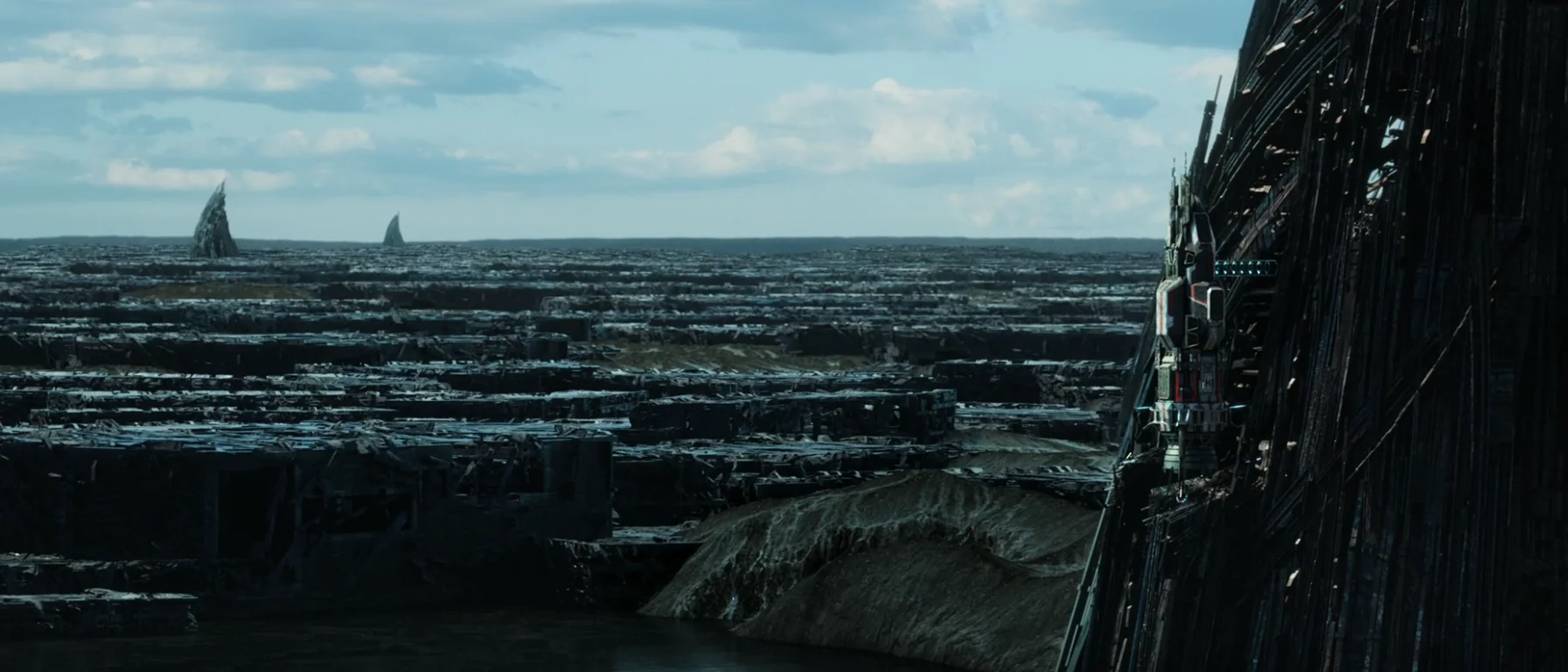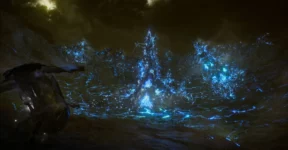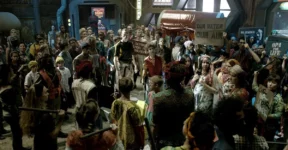Much about what happened to the protomolecule since the Eros Incident remains pretty much unknown. We know the protomolecule has taken Julie Mao and Miller with it to Venus (and killed them). And at the end of the third season of The Expanse, it was revealed that the protomolecule deliberately gave the human civilizations in the Solar System access to hundreds of inhabitable planets in the galaxy through the newly discovered wormholes, about 1300 of them, known simply as the Ring network. Here’s a deeper look at newly habitable planets across the galaxy including Ilus.

Getting to Ilus
No one knows about the protomolecule and the Ring network better than Holden, thanks to the ghost of Miller, who has been on his side and feeding him information about the wormholes. Holden says he had a vision of something powerful that can destroy planets within seconds, and that’s probably what’s hiding behind the Ring.
Avasarala insists everyone should refrain from exploring the newly opened territories. Just because some doors are now open, it doesn’t always mean humans should walk right through them. Her supporters, including the OPA’s Behemoth this time, come to her aid by setting up a blockade. They argue that because there’s not yet an established government and law enforcement agencies out there, a “free pass” for everyone means innocent civilians will be easy prey to pirates and whatever evil entities waiting on the other side.
Despite the blockade, some refugees from Ganymede on board the freighter Barbapiccola make it through the Ring and land on a planet they call Ilus. In response, Avasarala wants the Rocinante to follow suit and investigate the planet. The UN also sends another team to take part in the expedition. The refugees are not exactly fond of it and destroy the landing pad for the shuttle carrying the team. Many people die and supplies are lost.
The Expanse Season 4 doesn’t really delve into the potentially dangerous investigation that may go back to billions of years in the past. Instead, much of the story is set on Ilus, the first exoplanet colonized by humans. Since this is The Expanse, humans bring their long-running conflicts to the newly discovered planet as well.
Scratching the Surface of Know Ilus
A shot of Ilus from afar might make you think the planet looks a lot like Earth. It’s true to some extent, but there are more differences than similarities between the two. Ilus’ surface has only two key features: one massive continent and one gargantuan ocean. Each occupies roughly half the planet’s surface.
Most of the southwest area of the continent is composed of desert regions. Sandstorms, typically occurring from late afternoon to sundown, are common in the area north of the desert. Further to the north, the land is much more temperate and potentially suitable for growing crops. Everything else is just one big ocean with an archipelago of thousands of islands. The biggest land area in the archipelago is observable from orbit. Ilus’ atmosphere is not as conducive to humans as that of Earth, but humans can breathe the air without noticeable irregular physical symptoms. Ultraviolet light reaches the planet’s surface, but with modulated amplitude. Despite all of that, there doesn’t seem to be any geological activity. Ilus doesn’t even have natural magnetic fields.
Initial observation hasn’t produced conclusive results to determine why or how Ilus has become what it is today. That said, observers find indications to suggest that Ilus was heavily modified and engineered by the previous inhabitants, most likely the Ring Builders themselves. Nearly the entire planet was transformed into a fully automated lithium ore refinery and processing station. Some ancient structures remain standing, such as observatories on mountain tops, habitation buildings in subterranean areas, and libraries.
The geology of Ilus makes for a convincing argument about its engineering history, or terraforming to an extent. Even the tectonic plates appeared to have been machined with precision. And Ilus is not just rich in lithium; it presumably contains the largest deposit of lithium, which at this point is one of the rarest minerals in the entire Solar System, and the purity is beyond the limit of what is achievable by any known natural phenomenon. Most islands in the archipelago have many nuclear reactors. Some say the archipelago isn’t even a naturally occurring land mass; the islands were created by the Ring Builders to house fission reactors near a large body of water to ensure sufficient cooling.
We think Ilus is proof that Holden is right all along about how the war for power and resources will happen following the formation of the Ring network. Avasarala is also correct in suggesting that refraining from free exploration could be a good thing for unregulated territories with neither established governments nor military powers. The world on the other side of the Ring is space Wild West, and humans are “mostly” wrong to assume that they know what they’re doing out there.
Now that many new worlds are open for exploration, do you think the Belters have any chance to gain true freedom from repression by the Earthers and the Martians? Will the protomolecule appear on other exoplanets? We’d love to hear from you.
Other Things You Might Want to Know
Is Ilus like Earth?
In some ways, yes. Humans can breathe the air and the difference in gravity is not so big that it becomes a hindrance. That said, Ilus is an exoplanet with its own distinctive biomes. Ilus and Earth don’t share the same biology, and that’s where unexpected interactions should happen. The wildlife, the oceans, the desert lands, and the atmosphere are not custom built for humans. And the same thing applies to the animals. For example, the mosquito-like bugs find human blood toxic and the locusts appear to have organs made of metal or metalloid materials such as iron and silicon.
How is Ilus different from any other planet seen in Star Trek?
Many, if not most, “planets of the week” featured on Star Trek are inhabited and have monolithic cultures with some socio-political issues. Although there are notable differences in terms of geology and civilization, strangely enough, a lot of those issues are not entirely dissimilar to those encountered on Earth. Ilus is uninhabited to begin with. There is evidence that an alien civilization used to live on the planet, but they’re now gone.
What are “biomes” again?
A biome is a specific geographic area of a planet, classified based on the animals and plants in the region. Soil, temperature, water, light intensity, and climate, among others, help determine the type and diversity of wildlife in a biome, which may comprise multiple ecosystems. There is not a clear boundary between one biome and another. For example, terrestrial and aquatic biomes have no shared clear-cut boundaries, but they end at transition zones such as wetlands and coastal regions.
Check out other articles by month:







